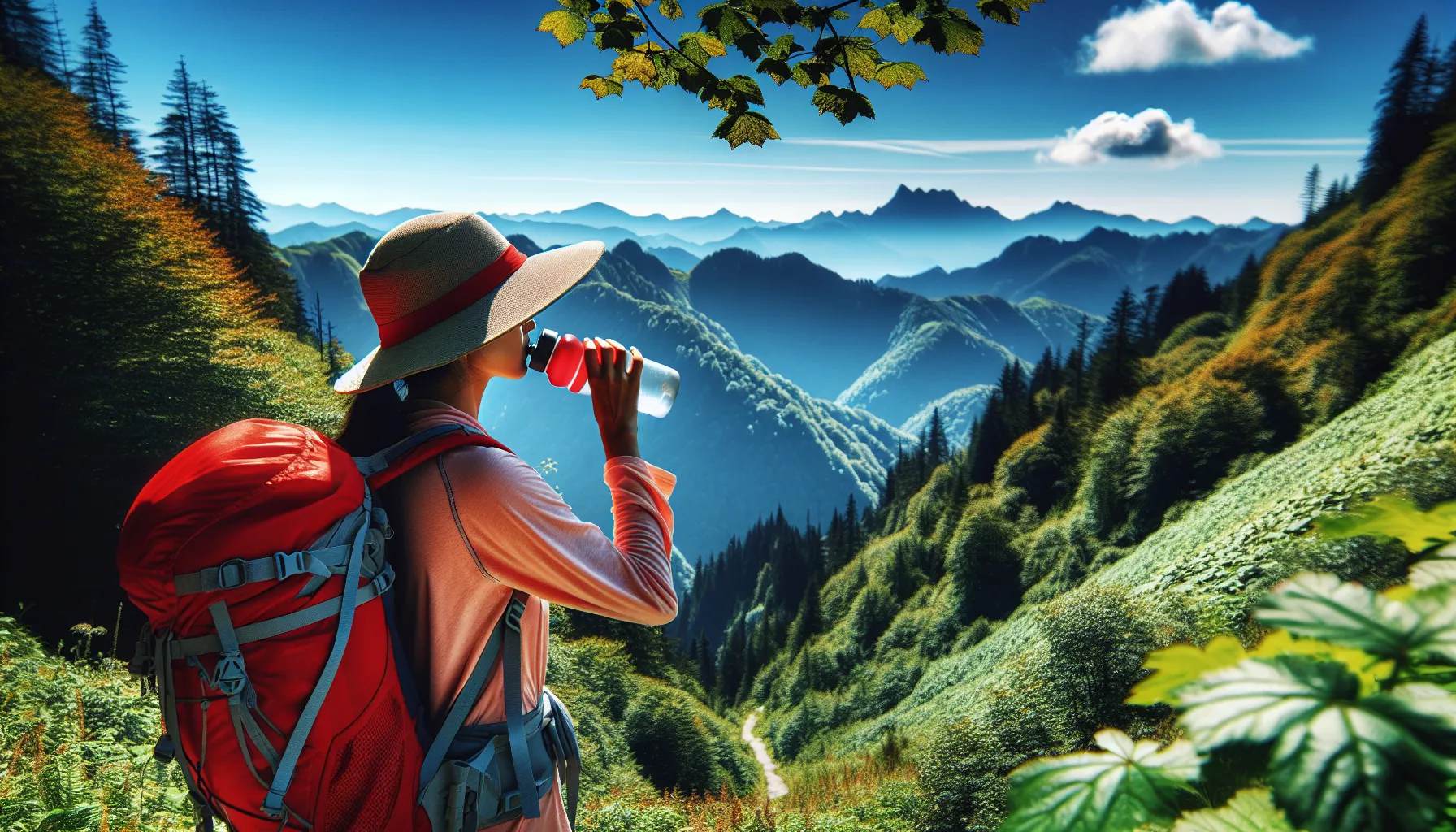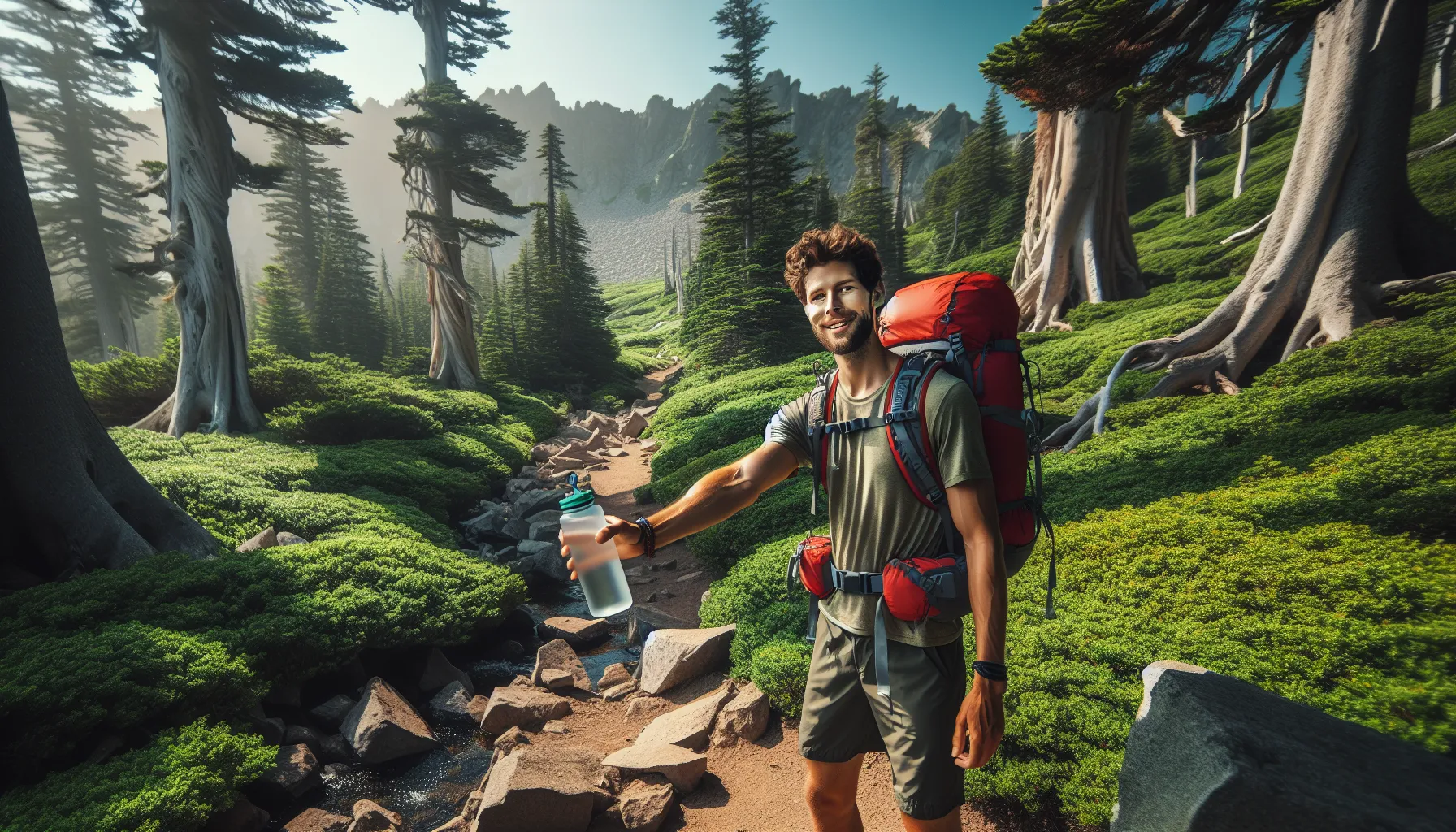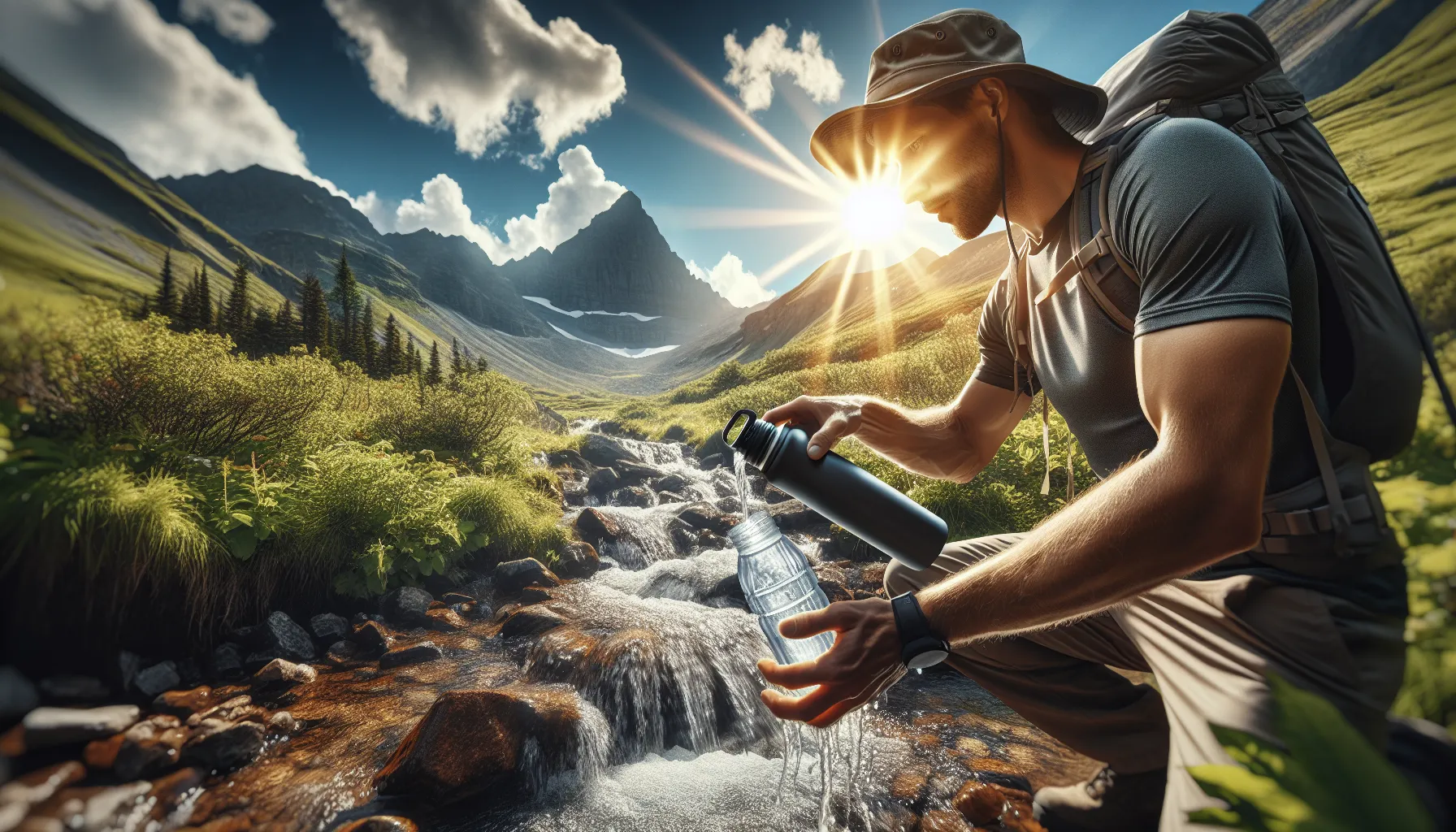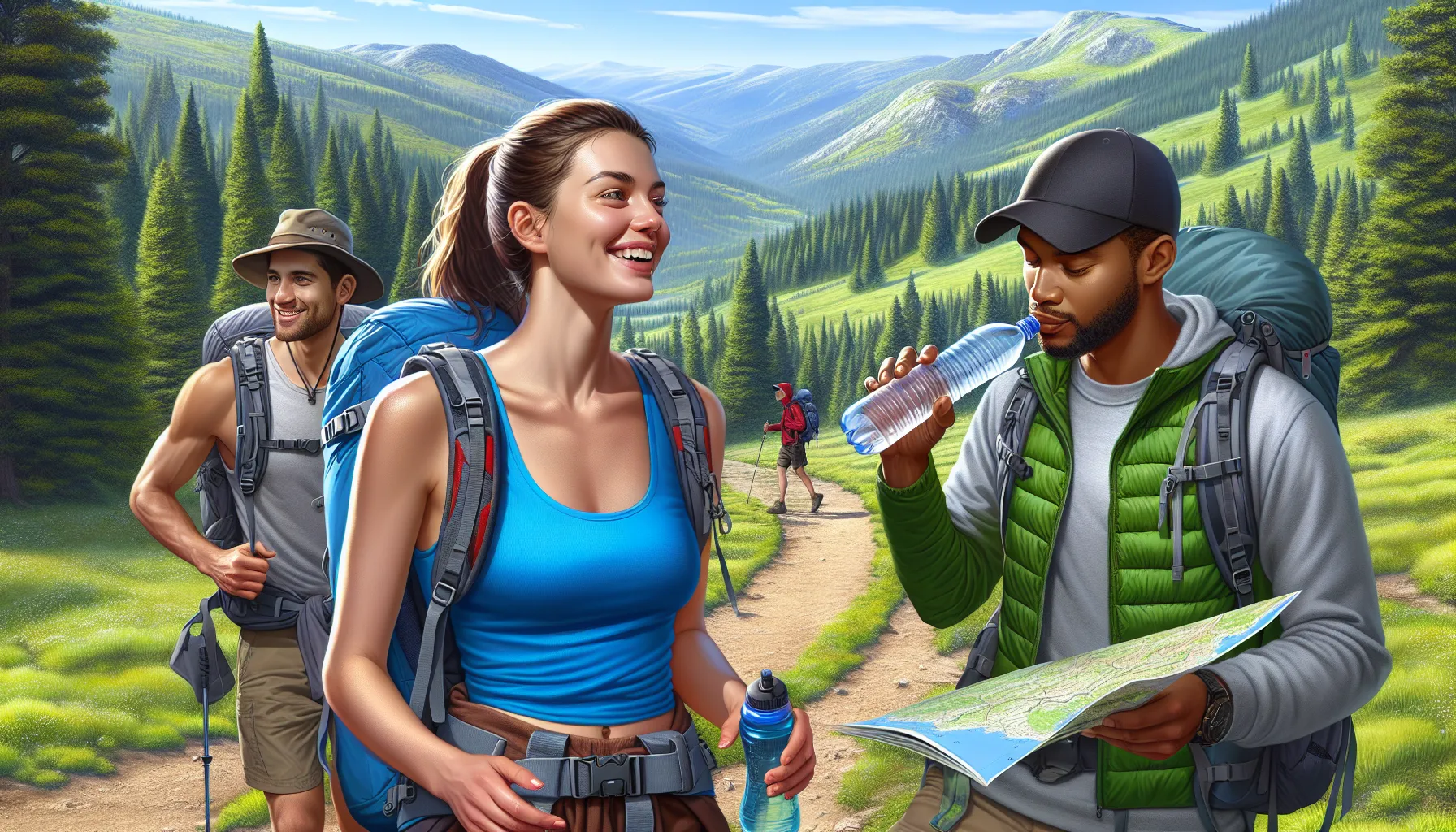Key Takeaways
- Staying hydrated while hiking is crucial for maintaining energy, preventing dehydration, and ensuring physical and cognitive performance on the trail.
- Start hydrating before your hike and regularly sip water throughout, even if you’re not thirsty, to keep hydration levels consistent.
- Watch for dehydration signs like dizziness, dry mouth, or fatigue, and take action immediately by resting and increasing water intake.
- Use the right hydration tools, such as hydration bladders, water bottles, or portable water filters, tailored to your hiking needs and trail conditions.
- Replenish electrolytes lost through sweat by using low-sugar electrolyte tablets or powders, especially during strenuous or hot hikes.
- Plan your water needs carefully based on hike duration, weather, and refill opportunities, ensuring you carry enough to stay hydrated and safe.
There’s nothing quite like hitting the trails and soaking in the beauty of the great outdoors, but hiking can take a toll on your body if you’re not careful. One of the most important things I’ve learned is that staying hydrated isn’t just about quenching your thirst—it’s about keeping your energy up and your body safe during the journey.
Importance Of Staying Hydrated While Hiking
Hydration impacts physical performance and cognitive functions during hikes. When my body lacks sufficient water, fatigue and decreased focus set in quickly, making trails more challenging to navigate.
Water regulates body temperature through sweating, especially on warm or strenuous hikes. Without enough fluid intake, the risk of heat-related illnesses like heat exhaustion increases significantly.
Proper hydration supports muscle function by transporting electrolytes efficiently. Cramps or weakness can occur if hydration levels drop, disrupting the hiking experience.
Dehydration affects decision-making abilities, which are critical in unfamiliar or remote terrains. Making sound choices is harder when thirst grows severe.
Staying hydrated boosts endurance. Sufficient water intake keeps energy consistent, improving both the pace and comfort of longer hikes.
Tips For Maintaining Hydration

Staying hydrated while hiking requires preparation, consistent water intake, and awareness of your body’s signals. These steps ensure a safe and enjoyable outdoor experience.
Start Hydrated Before Your Hike
I drink plenty of water the evening prior and the morning of my hike. This pre-hydration supports my body’s water levels, reducing the risk of early dehydration on the trail. Consuming fruits like watermelon or oranges also helps boost hydration.
Drink Water Regularly During The Hike
I sip water every 15–20 minutes, even if I’m not thirsty, to keep my hydration steady. Carrying a water bottle or hydration pack makes this convenient. When on longer trails, I use electrolyte tablets to replenish lost minerals like sodium and potassium.
Monitor The Signs Of Dehydration
I stay alert for indicators like dry mouth, dark urine, dizziness, or excessive fatigue. If I notice these, I increase my water intake and rest in shaded areas. Recognizing and addressing dehydration early prevents severe complications.
Choosing The Right Hydration Tools

Carrying effective hydration tools makes water access easier and helps maintain energy during hikes. Selecting gear suited to the trail conditions and personal preferences improves hydration efficiency.
Hydration Bladders Vs. Water Bottles
Hydration bladders minimize effort while moving. These flexible reservoirs, often housed in backpacks, come with a tube for sipping, allowing hands-free access. They’re ideal for long trails or technical hikes where stopping frequently isn’t practical.
Water bottles, on the other hand, offer simplicity and durability. Wide-mouthed options are easier to refill and clean, and insulated versions keep water cool. Bottles suit shorter hikes or areas with accessible refill points.
Lightweight Water Filters and Purifiers
Water filters and purifiers ensure a clean water supply when natural sources are the only option. Filters remove bacteria and debris, while purifiers also eliminate viruses. Pump filters work for groups, while compact straw or squeeze filters suit solo hikers.
For extended trips, UV purifiers or chemical tablets treat larger volumes at a time. Verify the tool’s treatment speed and efficiency against the expected water source quality.
Electrolyte Tablets And Powders
Electrolyte supplements replenish sodium, magnesium, and potassium lost through sweat. Tablets dissolve in water and are easy to pack, offering hydration boosts quickly. Powders allow customization of concentration and often include added minerals.
Opt for low-sugar blends to avoid unnecessary calories and energy crashes. They’re especially beneficial in hot conditions or on strenuous ascents.
Best Practices For Long Hikes

Staying hydrated on long hikes demands careful planning and informed decisions. Proper water management reduces risks and supports performance over extended periods.
Estimating Water Needs Based On Activity Level
I calculate my water requirements by considering intensity, duration, and weather. On moderate trails, I typically drink 0.5 liters per hour, while strenuous hikes or hot conditions may require up to 1 liter hourly. For multi-day hikes, I estimate my daily needs and include extra for emergency situations. For example, on a 7-hour high-intensity hike, I carry at least 3–4 liters.
Planning Water Refill Stops
I always research refill opportunities along my route before setting out. I identify natural water sources like streams and lakes, ensuring I bring purification tools for safety. On trails with few sources, I rely on pre-stashed water reserves or carry collapsible bottles to maximize storage. For instance, if a trail has limited water after the midpoint, I refill fully at the last known source.
Conclusion
Staying hydrated while hiking isn’t just about drinking water—it’s about being prepared, listening to your body, and making smart choices on the trail. With the right tools and habits, you can keep your energy up, stay safe, and truly enjoy the beauty of the outdoors.
Every hike is an opportunity to connect with nature, and proper hydration ensures you’re at your best to make the most of it. So pack wisely, stay mindful of your water needs, and let the adventure begin!
Frequently Asked Questions
Why is hydration important during hiking?
Staying hydrated during hiking is essential because it maintains energy levels, prevents fatigue, and regulates body temperature. Proper hydration also supports muscle function, reduces the risk of cramps, and ensures cognitive focus for navigating trails safely.
How much water should I drink while hiking?
It’s recommended to drink 0.5 liters of water per hour on moderate trails and up to 1 liter per hour on strenuous or hot hikes. Take small sips every 15–20 minutes to stay consistently hydrated.
What are the signs of dehydration while hiking?
Common signs of dehydration include dry mouth, dizziness, decreased energy levels, dark-colored urine, and difficulty concentrating. If you notice these symptoms, rest in a shaded area and increase your water intake immediately.
What should I drink to stay hydrated on a hike?
Water is the best choice, but adding electrolyte tablets or powders can replenish lost minerals. Hydrating fruits like watermelon, oranges, or coconut water can also provide hydration and energy.
Should I use a water bottle or hydration bladder while hiking?
Hydration bladders are ideal for long or technical trails as they allow hands-free sipping. Water bottles are simpler, durable, and great for shorter hikes. Both options work well depending on personal preferences and the trail.
How can I prepare for hydration on long hikes?
Start hydrated by drinking water before the hike. Plan water refill stops by researching natural water sources and carry lightweight filters or purification tablets. Bring extra water for emergencies, especially on trails with limited sources.
What tools can help ensure clean water during hikes?
Lightweight water filters, UV purifiers, or purification tablets are excellent tools for treating water from natural sources. These ensure safe, clean drinking water during hiking trips.
How can I manage water storage for multi-day hikes?
For multi-day hikes, calculate daily needs and carry collapsible bottles to save space. Consider stashing water at pre-determined points along the trail if natural sources are scarce.
Do electrolytes help during hiking?
Yes, electrolyte tablets or powders can help replace lost minerals like sodium, potassium, and magnesium, improving muscle function and preventing cramps during strenuous activities.
Can dehydration impact hiking performance?
Yes, dehydration can cause fatigue, reduced focus, slower decision-making, and physical weakness, making the trails more challenging. It also increases the risk of heat-related illnesses. Staying hydrated improves endurance and overall enjoyment.

